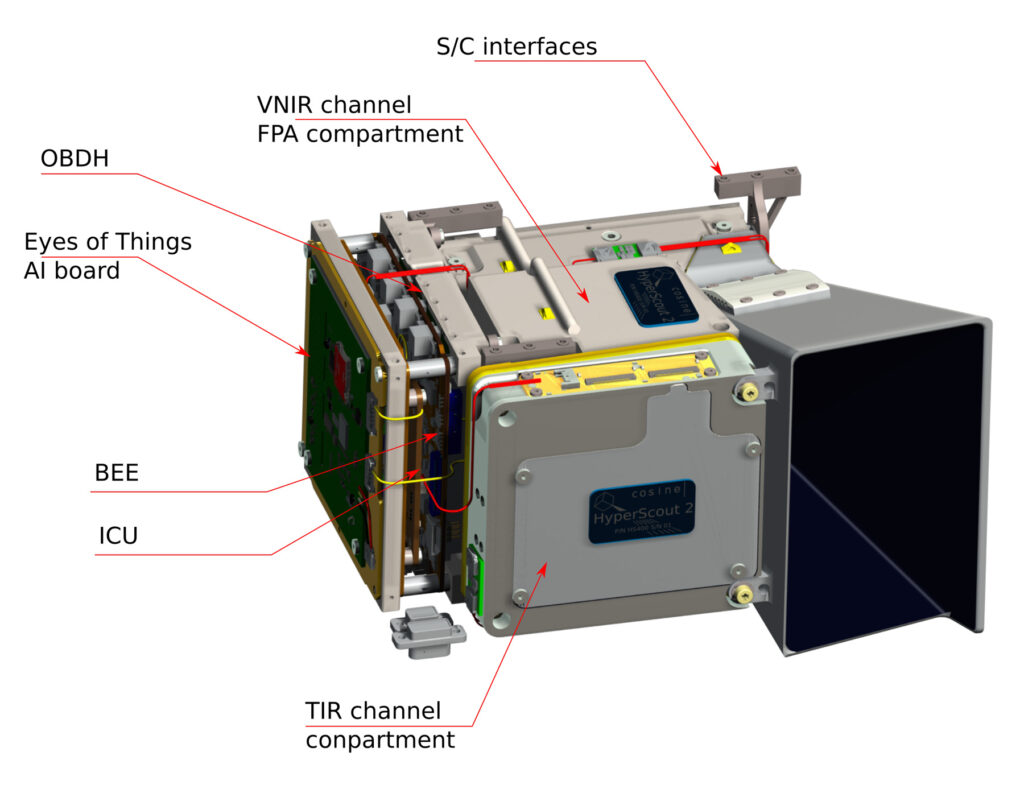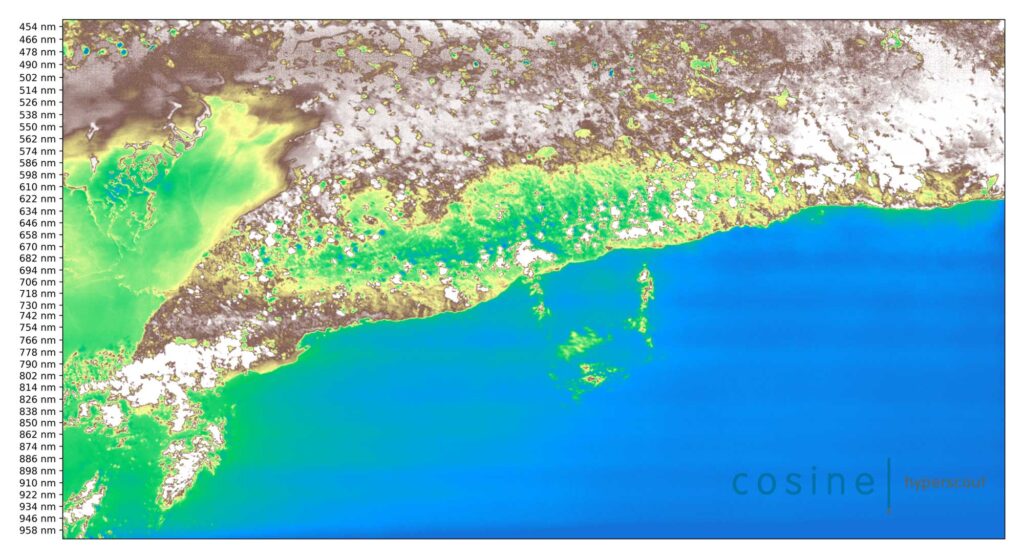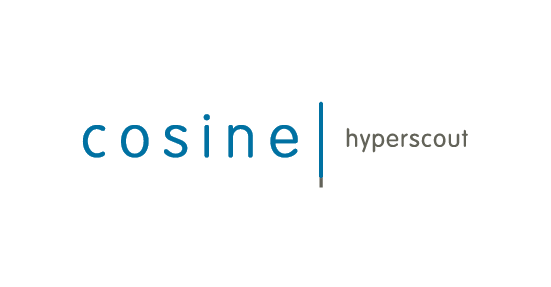
 Payload
Payload The HyperScout® 2 leverages the HyperScout 1 hyperspectral imager platform complementing it with thermal imaging and Artificial Intelligence capabilities in a unique compact package, suitable for deployment on small and larger satellites.
HyperScout enables science missions from small platforms. It is an affordable hyperspectral and thermal imager that enables smart services for its commercial customers, with a quick turnaround between order and delivery.
The first mission which will benefit from the HyperScout® 2 measurements is the FSSCat, an innovative mission concept consisting of two federated 6U Cubesats in support of the Copernicus Land and Marine Environment services. A dual microwave payload and HyperScout® 2 will be used to measure soil moisture, ice extent, and ice thickness, and to detect melting ponds over ice.
HyperScout is serving the Earth observation and Planetary Science markets. Both markets rely on direct sales to customers, which operate constellations and take care of the full infrastructure. Or through the sales to platform providers, which will sell to the final customers the turn key solution.
The system integrators supplying or operating constellations of small satellites need affordable hyperspectral imagers to enable smart services and quick turnaround between order and delivery.
International.
HyperScout® 2 is the product enhancement of HyperScout, a miniaturised hyperspectral imager developed with ESA TEC/MMO. The enhancement addresses both the spectral range and the processing capabilities. The spectral range is increased with the integration of an additional spectral channel in the Thermal Infrared range. The processing capability with the integration of a Vision Processing Unit is tailored for Artificial Intelligence applications.
The imagers are based on 2D sensors used in push broom mode (VNIR and TIR channels). They are designed to be operated upon nano, micro and larger satellites. The extremely compact reflective telescope ensures high optical quality, and the telescope is an athermal system based on a monolithical structure. The VNIR Focal Plane Array (FPA) is based on CMOS sensor and a multispectral bandpass filtering element used to separate the different wavelengths. The TIR FPA is based on a microbolometer and a multispectral filtering element.
The Instrument Control Unit (ICU) presents the contact point for the HyperScout® allowing in-flight debugging and powering each component. The Back-End Electronics (BEE) is the electrical interface to the spacecraft and is latch-up protected. It distributes power, clocks, telemetry and commands between the units, controls the detector and serves as the data and control interface. The On Board Data Handling (OBDH) serves multiple purposes, the most distinct being the platform for both the acquisition and the processing modes. It can run algorithms for data processing (L0 to L2A-L2B). Both the acquired L0 image data and processed data are stored on board the payload’s MMUs.


HyperScout® 2 is a miniaturised hyperspectral and thermal imager with on-board intelligence enabling commercial and operational small satellite missions.
The hosting satellite can be as small as 3 litres and a weight a few kilograms, resulting in a considerable cost saving compared to an infrastructure based on larger platforms.
The market of hyperspectral imagers is consolidating. Examples of hyperspectral imagers on orbit or under development in Europe are the Italian PRISMA and the German EnMap. They have similar spectral performance as HyperScout but broader spectral range, better spatial sampling and smaller swaths on ground – hence smaller revisit possibility. Their mass is of the order of hundreds kilograms therefore are accommodated on satellites with a mass at launch of 500 to 1000 kg. Earlier stage initiatives can be found in Belgium, hyperspectral instruments commercially viable are under design and considered to be built. Other hyperspectral service initiatives can be found in in South America, however being based on a service model, it is not in competition with the HyperScout sales model.
The activity is now completed. HyperScout® 2 has performed successful operations in 2020 acquiring spectral datasets that have been processed providing spectral reflectance at top of atmosphere in 50 spectral bands confirming the expected performance of the payload. Additionally Artificial Intelligence algorithms have been run on the HyperScout platform showing the ability of creating cloud masking with a very good accuracy and with zero false positives.
